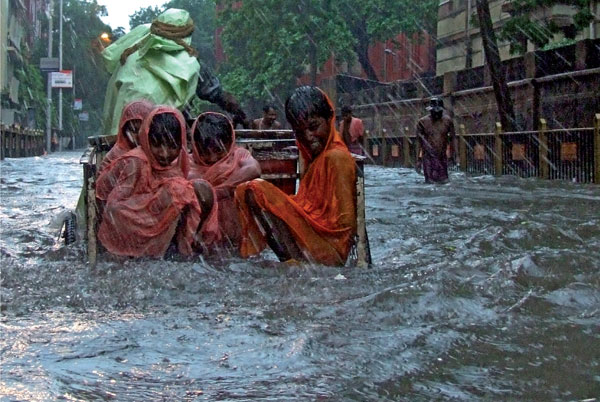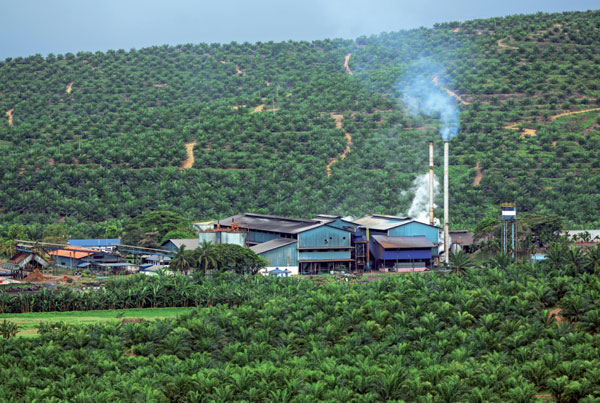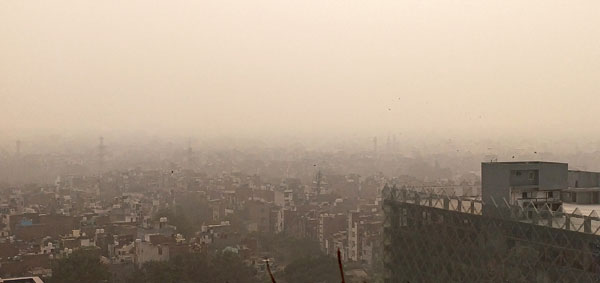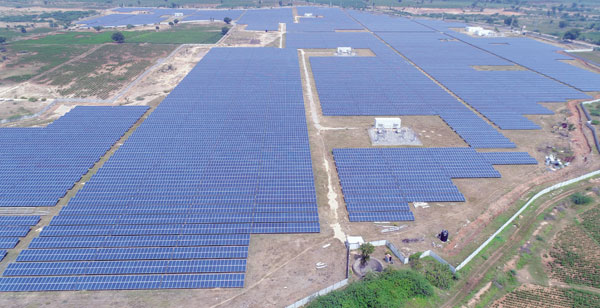Meet David Wallace Wells
First published in Sanctuary Asia,
Vol. 40
No. 4,
April 2020
American journalist and author of The Uninhabitable Earth, David Wallace-Wells has been a strong voice of reason on climate change science and environmental issues. Namrata Kolachalam, a journalist based in Mumbai, speaks to him about climate change in India, the value of fear in discussing climate change, the effectiveness and power of images in telling the story, and the reasons we place hope in new technologies.
Is this your first time in India? What do you make of the discourse on climate change here compared to elsewhere in the world, and in particular, the U.S.?
This is my second time in India, but I can’t say I’m an expert in these dynamics. In general, it seems like the public is considerably more aware and concerned about these issues than they were a few years ago. They’re rightly focused on air pollution issues, which is related to climate change without being caused by climate change, and I think that is healthy because public health is a powerful argument in trying to motivate action on climate. I think to this point, advocates, activists and scientists have underutilised it as a tool. It is powerful because it feels immediate to the public and because it’s something that remains under local control. The carbon emissions that India produces are distributed globally, which means that the effects are also distributed globally, but public issues are not like that. Pollution is local, the costs are local and the benefits of cleaning up are local.
Nevertheless, India is not nearly as concerned – as a political entity and as a population – as it should be, considering that it is going to be, by every metric, the hardest-hit country in the world this century. It’s going to be hit much more intensely even than its share of carbon emissions, which is growing and quite significant. Its share of global climate impacts is expected to be about a quarter of all global climate impacts – in this one country alone. And I think there has not been enough messaging connecting extreme weather natural disasters to the underlying dynamics of climate change – heat waves, droughts, flooding – that have been exceptional over the last few years. So, there is a lot more room to go in terms of public understanding, especially because this is ground zero, you’d like to see a public that is the most engaged anywhere in the world. And while there’s been a lot of progress, we’re still not there.

India is projected to be one of the hardest-hit countries by the climate crisis, with more frequent and more intense disasters including floods and killer heat waves. Photo by: Supriya Biswas
In terms of its roles and responsibilities, where does India fit in, especially in a world where the U.S. and China haven’t stepped up to the plate the way that they should? Given its current focus on pulling millions out of poverty, is there an argument for development that conflicts with its global responsibility to cut emissions?
It used to be the case that everyone said developing nations had to choose between growing more quickly and responsibly. That has really reversed in the last few years as economists have taken a more comprehensive assessment of both what the damages from climate change are likely to be and what the opportunities for taking action on it could be. And they now say faster action will be better for everybody, even for countries that are relatively early in their economic development.
For me, the touchstone for this new way of thinking is the government of Indonesia. Over the last twenty years, Indonesia has doubled its per-capita income and halved its poverty rate, but done so by industrialising, which means it has also doubled its emissions. And Indonesia says it can now [significantly cut] its emissions by 2030 and still grow at six per cent per year, which is faster than the five per cent it grew over the last two decades where it doubled its income. I don’t know if it’s going to live up to that pledge – as with all climate pledges, I’ll believe it when I see it. But the fact that policymakers are even talking in those terms is dramatically different from the way they were talking a decade ago when they said we must absolutely prioritise development and growth and that means growing in a dirty way. I think this is largely due to the revolution in renewable energy which made it affordable in parts of the world where it was never affordable before. Of course, it should be the case that nations that are given more leeway in how they behave; nevertheless, I think many of those nations don’t need that extra leeway as much as they might have seemed to a decade ago. At the level of global leadership, anyone who can fill the vacuum left behind by Donald Trump, I’m all for. Xi Jinping has been, I would say, a mixed leader, he’s doing both good and bad things at the same time. In general, that’s also how I’d characterise the path of India, which is to say there are major investments and progress but also continuing damaging behaviour. [In terms of population,] India is the second biggest in the world, and in relatively short order, will be the biggest country. It could also be the biggest economy in the world in the next few decades, and so there is a seat at the table for Indian leadership. I would like to think, as someone who is hoping for a relatively livable, relatively prosperous, relatively just climate future, that India would seize this opportunity. And not just by leading by example, but also leading at the negotiating table. And I do think the country has been centrally involved in a lot of that negotiation over the last half-decade especially. I’m heartened by that and would like to see more of it.
But ultimately, the U.S. is the biggest, most powerful country in the world. China is a close second. It’s hard to imagine a long-term satisfactory approach to this problem that doesn’t include leadership from the U.S. and China too.

Over the last two decades, Indonesia has doubled its per-capita income and halved its poverty rate, but its rapid industrialisation has also doubled its emissions. Policymakers have now pledged to halve emissions by 2030. Photo by: CE Photo, Uwe Aranas/ Public domain
There was some pushback to your book, not by people disputing the facts, but by people who felt the content was alarmist and could paralyse the public with fear. How do you respond to that kind of criticism?
For a really long time, scientists and advocates thought talking about terrifying futures would paralyse people with fear, as you say. And as a result, they weren’t even truly honest about what the science was saying, and the public was really poorly informed about the scale of the threat and how dramatically it ould transform every aspect of human life. I came to climate change as a subject out of fear, and as a case study of one, I thought there are going to be other people awakened out of complacency by fear as well. And that fear can be motivating to them. I look at the last year-and-a-half, and I see a world awakened by panic, that has totally transformed the whole landscape of climate politics. The 2018 UN report looking at the difference between 1.5 versus 2°C of warming was an unprecedentedly alarmist report. I think it was the first time that the scientific community was really forthright about what they knew was coming and what would have to be done to avoid it. And the result has been this unprecedented year of engagement with Greta Thunberg and the climate strikes and the formation of the Extinction Rebellion. It’s still not as fast as we need it, but climate engagement and climate concern are both much higher than ever before. And I don’t think that it’s a coincidence that it happened in the immediate aftermath of scientists for the first time really raising the alarm about climate. I think that’s part of the explanation, not the whole explanation.
I also think [it has to do with] the fact that extreme weather is visible in a much more immediate way, even in parts of the northern hemisphere that had been relatively protected from climate impacts to this point. I don’t think fear is the only way to talk about climate change. But for a very long time, scientists and advocates left it in the toolkit without using it. Having now finally started to deploy that tool, we’re seeing a public awakening. I talk to people who spent decades working in this area and they say they’ve never been more hopeful. Even as the bad news from climate keeps getting worse, the political change has been so dramatic that for the first time, they are seeing the changes they want as possible, and not just as some distant dream. And for the many people who may have been a little aware and concerned about climate change but were functionally complacent about it, I think fear can be really useful in pushing us from complacency to engagement, which is ultimately what we need. Such large-scale policy changes require large-scale public support.

To achieve the UN’s Intergovernmental Panel on Climate Change (IPCC) pledge to halve carbon emissions by 2030, cities like New Delhi will have to rebuild their infrastructure and economy, invest in public transportation, and shift to green renewable energy. Photo by: Prami/ Public domain
What do you think about the images we associate with climate change – the polar bear drifting helplessly on a small piece of ice, for example – and their effectiveness in telling the story of climate change?
I think images are really important, but I think the images that were chosen in the past were really inadequate and insufficient. It’s moving to consider the plight of an animal, but it’s quite another thing to think your own life is going to be affected by these changes. And I think that’s one grotesque reason that the wildfires in particular [referencing recent wildfires in California and Australia] have been such powerful teaching tools. Because it’s impossible to look at footage of those fires and not imagine your own house being threatened, your own life being threatened. And I think the extreme weather that we’re seeing on our news programmes over the last few years have been a really powerful mover of public opinion, because for the first time climate change is not something we have to imagine in the future, it’s something we’re seeing in the present tense. And we’re seeing it in a way that we can imagine or even understand how it will affect our own lives as individuals. Which is a really dramatic leap from crying about the plight of a polar bear on a melting ice float.

Though technological innovations to mitigate the climate crisis are occurring at a rapid pace in the laboratory, it is a tremendous challenge to roll these out at the scale and speed required to have an immediate positive impact. Photo by: Thomas Lloyd Group/ Public domain
There exists a techno-optimistic version of events in which we’re saved from climate change by new inventions and innovations. I’m curious where you think this kind of hope comes from, and if it’s connected to an absence of leadership by governments?
I think part of it is reflexive optimism. People don’t want to believe the world is crumbling into disarray. In the U.S. – but really all across the world – we’ve developed an unhealthy and inaccurate sense of the pace of technological change because of the proliferation of the internet and cell phones, and in particular, the app economy. But even taking those devices one by one, it took the internet 30 years to really reach global penetration. It took smart phones around 20 years. And even something like Facebook is a 15-year project. The UN says that we need to cut in half our carbon emissions by 2030. And in order to do that, it’s not just a matter of getting half the world to download an app on their phones. We need to literally rebuild the world’s infrastructure, rebuild all of our homes and buildings, invest dramatically in public transportation, electric grids, totally remake the power sector of the entire global economy. These are projects that are much more complicated to roll out than what counts as innovation in Silicon Valley. In the wealthiest corners of the world we tend to fall into a trap where we think if we have a technology that works in a lab, therefore the problem is solved. Really, that’s just the first part of the challenge. Rolling it out at the scale that we need, at the speed that we need, is a much bigger challenge than that. And our governments have lost the support of the public to undertake those kinds of public infrastructure projects.
It’s often said in America that we put a man on the moon, so we can solve climate change. But we’re not investing in science at anything like the level that we were investing when we put a man on the moon. Now, different countries are operating in different ways – so the way China is managing its infrastructure is very different. And its public, while concerned about climate change, is also really optimistic about its future, because it’s on a really visible upward trajectory in which a lot of new stuff is getting done. And that means they have faith that much more could get done if priorities shifted towards climate. It’s always hard to generalise globally, but across most of the wealthiest countries in the world, I think that we’ve disinvested in public leadership over a generation, culturally trained ourselves to believe we make our mark on the world politically through what we buy and what we consume, rather than through politics itself. And as a result, we find ourselves poorly equipped to handle this existential crisis, because the tools we need to address it are the ones we’ve laid waste to over the last generation.
Note: This interview was edited for length and clarity
.jpg) David Wallace-Wells
David Wallace-Wells is an American journalist known for his writings on climate change. He wrote the 2017 essay
The Uninhabitable Earth, which he later expanded into the 2019 book of the same name. He is Deputy editor and climate columnist for
New York magazine.






.jpg)